How Many Miles to Break in Hiking Boots: Quick Answer
As a rule of thumb, it is recommended to walk at least 15-25 km (9-16 miles) in total to break in your hiking boots without getting any blisters. You should start by walking a short distance without a backpack and gradually increase the distance and pack weight over time.
It’s important to take it slow when breaking into your hiking boots to avoid causing yourself pain or discomfort. Read on to do this successfully!
When it comes to hiking, one of the most important pieces of gear is your hiking boots. However, even the best hiking boots need to be broken in before they can be worn on a long hike. The question is, how many miles does it take to break in hiking boots?
The answer to this question is not straightforward, as it depends on a variety of factors. Some factors include the type of hiking boot, the material it is made of, the shape of your feet, and the type of hiking you plan to do. In this article, I will provide a general guideline for how many miles it takes to break in hiking boots, as well as tips and methods for breaking in your boots effectively.
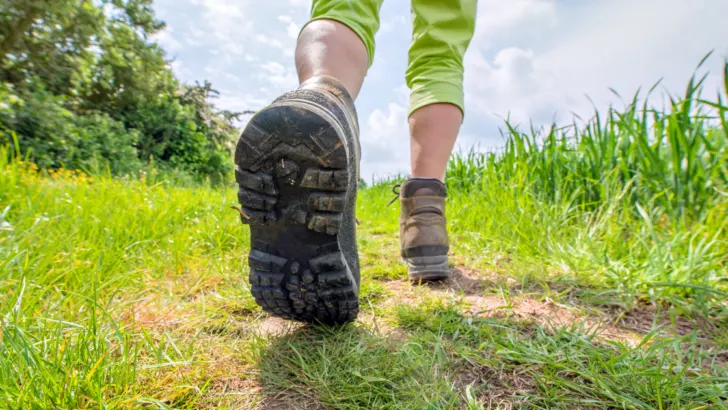
Key Takeaways
- Breaking in hiking boots is important to prevent blisters and discomfort on the trail.
- The number of miles it takes to break in hiking boots varies depending on several factors.
- Gradually increasing the distance and weight of your hikes is the most effective way to break in hiking boots.
Importance of Breaking in Hiking Boots
Breaking into hiking boots is a crucial step before embarking on a long hike. It involves wearing your boots for an extended period to allow them to conform to the shape of your feet. This process helps to prevent blisters, hot spots, and other foot injuries that can ruin your hiking experience.
Wearing new hiking boots without breaking them in can cause discomfort and pain, leading to an unpleasant hiking experience. It can also cause blisters, which can be painful and take a long time to heal. Breaking in your hiking boots will ensure that they are comfortable and fit well, reducing the likelihood of foot injuries.
The amount of time it takes to break in hiking boots varies depending on the material and stiffness of the boots. Soft materials such as suede, split leather, fabric, and nylon may take around 50 miles of walking to break in. Stiff materials such as full-grain leather, rough out, or nubuck may take up to 100 miles to break in fully.
In addition to breaking in your hiking boots, it is also essential to wear the right socks and insoles. Wearing the wrong socks or insoles can cause discomfort and increase the risk of blisters. It is recommended to wear the socks and insoles you plan to use on your hike while breaking in your hiking boots.

In summary, breaking in your hiking boots is an essential step in preparing for a long hike. It helps to ensure that your boots fit well and are comfortable, reducing the likelihood of foot injuries and making your hiking experience more enjoyable.
How Many Miles to Break in Hiking Boots
As someone who loves hiking, I emphasize the importance of selecting hiking boots that provide comfort and an ideal fit. However, breaking in new hiking boots can be a daunting task, especially if you’re not sure how many miles it takes to achieve the perfect fit. That’s why I decided to write this article to provide you with accurate information on how many miles it takes to break in hiking boots.
In this article, I will share information on the average number of miles it takes to break in hiking boots made from different materials. I will also provide tips on how to properly break in your hiking boots to avoid blisters and discomfort on the trail.
It’s important to note that the number of miles it takes to break in hiking boots can vary depending on the material and construction of the boots, as well as your individual feet and hiking style. However, by following the tips and guidelines provided in this article, you can ensure that your hiking boots are comfortable and ready to take on any adventure.
Factors Affecting Break-in Time
Type of Boots
The type of hiking boots you have can greatly affect how long it takes to break them in. Each pair has its own unique characteristics that determine the break-in period. Lightweight hikers, with their modern materials and design, often provide immediate comfort straight out of the box. On the other hand, sturdy leather models, built for rugged terrains, may require weeks of consistent use before they mold to your feet and become truly comfortable.

It’s important to remember that the type of hiking boots you choose will not only influence the break-in time but also the level of support and protection they offer while you’re out on the trails. Whether you opt for lightweight trail runners or heavy-duty mountaineering boots, the break-in period is a critical phase where the boots adjust to your unique foot shape and movement patterns. By investing the time and effort into breaking in your hiking boots properly, you ensure a comfortable and enjoyable hiking experience while reaping the benefits of superior support and protection along the way.
Material of Boots
Having explored various hiking boots throughout my hiking journeys, I’ve come to appreciate the influence of different materials on the break-in process. The material composition of your hiking boots can indeed impact how long it takes to achieve optimal comfort. Boots crafted from soft materials like suede, split leather, fabric, or nylon typically require around 50 miles of walking to mold to the contours of your feet. On the other hand, boots made from stiffer materials such as full-grain leather, rough out, or nubuck may take up to 100 miles of walking to reach their full comfort potential.

It’s worth noting that the material of your hiking boots not only affects the break-in duration but also contributes to their durability and waterproofing capabilities. Softer materials often offer flexibility and breathability, while stiffer materials provide enhanced support and protection against rugged terrains. By understanding the characteristics of different boot materials, you can make an informed choice that aligns with your hiking preferences and the specific demands of your outdoor adventures.
Individual’s Foot Shape
When it comes to breaking in hiking boots, the unique shape of your feet can certainly impact the process. Those with wider feet may discover that their boots require a bit more time to conform to their foot shape, allowing for optimal comfort. Conversely, individuals with narrower feet might experience a more immediate sense of comfort in their boots. Moreover, those with high arches or specific foot conditions should exercise additional caution during the break-in period to avoid any discomfort or pain.
Understanding the shape of your feet and how it interacts with the boots you choose is crucial for an enjoyable hiking experience. It’s essential to find boots that accommodate your foot shape and provide adequate support. Taking the time to try on different boot styles, considering width options, and addressing specific foot conditions can help you find the perfect fit that minimizes discomfort and enhances your hiking adventures.

Overall, the break-in time for hiking boots can vary greatly depending on the type of boot, material, and individual’s foot shape. It’s important to take the time to properly break in your hiking boots to ensure they provide the necessary support and protection while hiking.
General Guideline for Break-in Distance
Breaking into hiking boots is an essential step before hitting the trail. It helps to avoid blisters, hot spots, and other foot injuries. The break-in period depends on the type of boots, the materials used, and the individual’s feet. However, there is a general guideline for break-in distance that can help you estimate how much time and distance you need to break in your hiking boots.
As a general rule of thumb, you should aim to walk between 30 to 50 miles in your hiking boots before embarking on a long hike. This distance is enough to soften the leather or synthetic materials and mold them to the shape of your feet. However, the exact distance can vary based on several factors.
The table below summarizes the break-in distance based on the type of hiking boots:
| Boot Type | Break-in Distance |
|---|---|
| Trail Runners | 0-10 miles |
| Light Hiking Boots | 10-20 miles |
| Midweight Hiking Boots | 20-30 miles |
| Heavyweight Hiking Boots | 30-50 miles |
It’s important to note that these are general guidelines, and some people may need more or less distance to break in their hiking boots. Factors such as the individual’s foot shape, the terrain, and the pack weight can affect the break-in period.
To break in your hiking boots, start by wearing them around the house for short periods, then gradually increase the distance and duration of your walks. You can also wear them on short hikes before embarking on longer ones. Make sure to wear the same socks and pack the weight that you plan to use on your hike to simulate the real conditions.

In summary, breaking in your hiking boots is a crucial step to ensure a comfortable and injury-free hiking experience. While the break-in distance can vary based on several factors, a general guideline is to walk between 30 to 50 miles before embarking on a long hike. Remember to take your time and gradually increase the distance and duration of your walks to avoid blisters and other foot injuries.
Methods to Break in Hiking Boots
When it comes to breaking in hiking boots, there are several methods that you can use. Each method has its own advantages and disadvantages, and the best method for you will depend on your personal preferences and the type of hiking boots you have. Here are three methods that I have found to be effective:
Wearing Them Around the House
Wearing your hiking boots around the house is a great way to start the break-in process. This method allows you to wear your boots for short periods of time and take them off as soon as they become uncomfortable. It is also a good way to test the fit of your boots and make any necessary adjustments.
When wearing your boots around the house, make sure to wear the socks and insoles that you will be wearing on the trail. Tie your boots snugly, but not too tight, and make sure your tongues and gussets are straight. This will help prevent blisters and hot spots from forming.
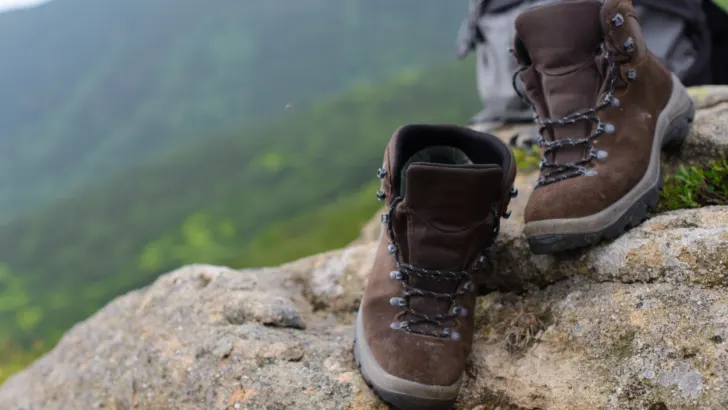
Walking on Trails
Walking on trails is another effective method for breaking in hiking boots. This method allows you to gradually increase the distance and pack weight over time, which will help your boots conform to your feet and become more comfortable.
Start by walking a short distance without wearing a backpack, and gradually increase the distance and pack weight over time. Make sure to take breaks and remove your boots if they become uncomfortable. This will help prevent blisters and hot spots from forming.
Hiking in Them
Hiking in your boots is the most effective way to break them in, but it is also the most challenging. This method allows you to test your boots in real-world conditions and get a feel for how they will perform on the trail.
Before going on a long hike, make sure to walk at least 50 miles for hiking boots made from soft material (suede, split leather, or fabric, and nylon) and 100 miles for stiff material (full grain leather, rough out, nubuck). This will help ensure that your boots are fully broken in and comfortable.
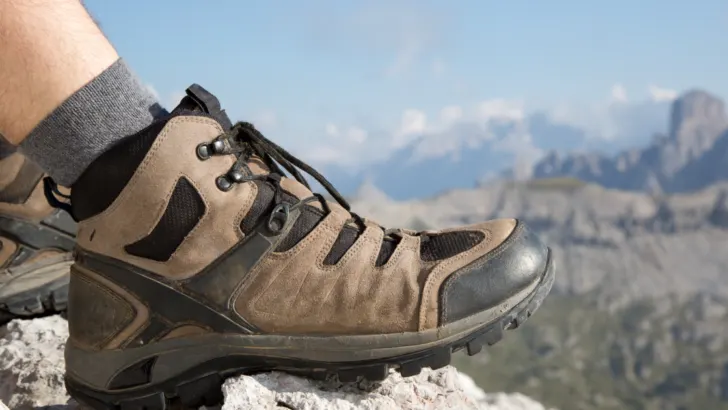
When hiking in your boots, make sure to wear the right socks and insoles, and take breaks as needed. This will help prevent blisters and hot spots from forming, and ensure that your boots are comfortable throughout your hike.
Tips for Breaking in Hiking Boots
As an experienced hiker, I know that breaking into hiking boots is crucial to ensuring a comfortable and enjoyable hiking experience. Here are some tips that I’ve found helpful when breaking into new hiking boots.
Wearing Thick Socks
When breaking in new hiking boots, it’s important to wear the same socks that you plan to wear on your hiking trips. Thick socks can help prevent blisters and hot spots by providing extra cushioning and reducing friction. I recommend wearing wool or synthetic socks, as they wick away moisture and keep your feet dry.
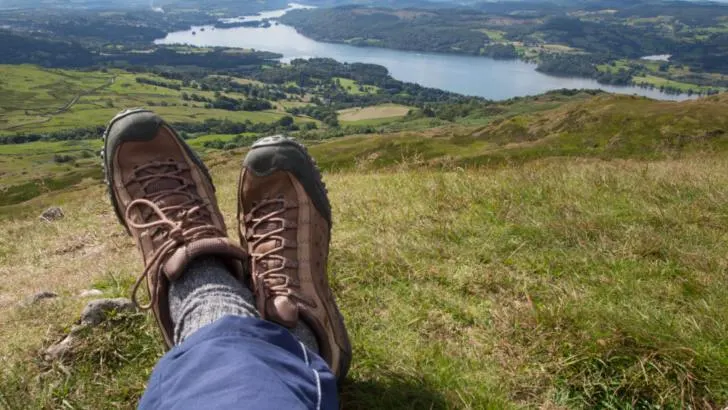
Starting with Short Walks
It’s important to start slowly when breaking in new hiking boots. I suggest starting with short walks around your neighborhood or on easy trails. This will help your feet get used to the boots and allow the boots to mold to the shape of your feet. Gradually increase the distance and difficulty of your hikes as your boots become more comfortable.
When hiking in new boots, it’s also important to pay attention to any discomfort or pain. If you feel any hot spots or blisters forming, stop and take a break. Apply moleskin or blister pads to the affected area and adjust your socks or lacing to reduce friction.
In summary, breaking in new hiking boots takes time and patience. By wearing thick socks and starting with short walks, you can help prevent blisters and hot spots and ensure a comfortable hiking experience.
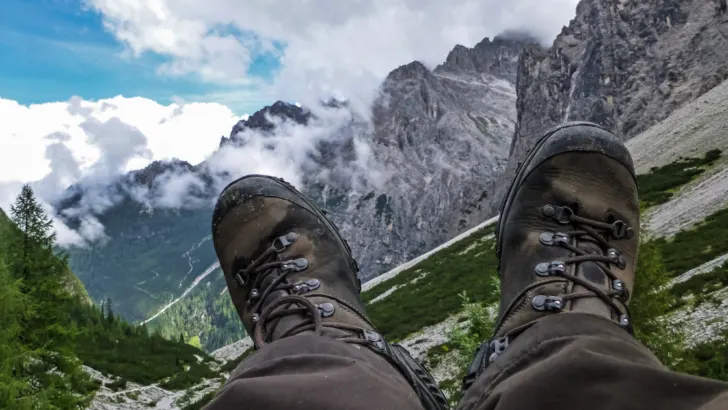
Breaking in Boots for Different Feet Types
When it comes to breaking in hiking boots, every foot is different. Some feet may require more time to adjust to new boots, while others may feel comfortable right away. As someone who has tried on many pairs of hiking boots, I have found that there are a few things to keep in mind when breaking into boots for different feet types.
Firstly, it’s important to choose the right size and fit for your feet. Hiking boots should fit snugly, but not too tight. There should be enough room for your toes to wiggle, and the laces should be secure all over. A good trick to test your fit is to try them on at the end of the day when your feet have swollen. Wear them with the socks you will hike in, to see how they would more accurately fit when out on the trail.
For those with wider feet, it may be necessary to break in boots for a longer period of time. In this case, it’s important to choose boots that are specifically designed for wider feet. Look for boots with a wider toe box and a more generous fit. It may also be helpful to wear thicker socks during the break-in period to help stretch the boots.
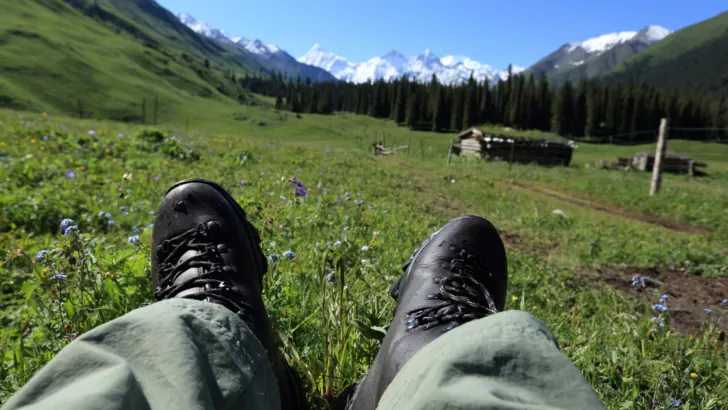
If you have high arches, you may need to break in boots more slowly and gradually. It’s important to choose boots with good arch support and cushioning. Take short walks around your neighborhood before heading out on longer hikes. Gradually increase the distance and pack weight over time.
Finally, for those with flat feet, it’s important to choose boots with good arch support. Look for boots with a contoured footbed and a supportive midsole. It may also be helpful to wear custom orthotics during the break-in period to provide additional support.
In conclusion, breaking in hiking boots is an important process that should not be rushed. Take the time to choose the right size and fit for your feet, and gradually increase the distance and pack weight over time. By following these tips, you can ensure that your hiking boots are comfortable and supportive on the trail.
Breaking in Boots for Different Hike Types
When it comes to breaking in hiking boots, the number of miles required can vary depending on the type of hike you plan to embark on. As an experienced hiker, I know that different hikes require different levels of preparation, and that includes breaking in your boots. Here are some guidelines to help you determine how many miles you should walk to break in your boots for different types of hikes:
Day Hikes
For day hikes, you don’t need to break in your boots as much as you would for longer hikes. Depending on the terrain, you can usually get away with breaking in your boots for 20-30 miles. This means that you can start with shorter hikes and gradually increase the distance as you go. Make sure to wear your boots on different types of terrain, such as hills, rocks, and dirt trails, to ensure that they are comfortable and supportive.
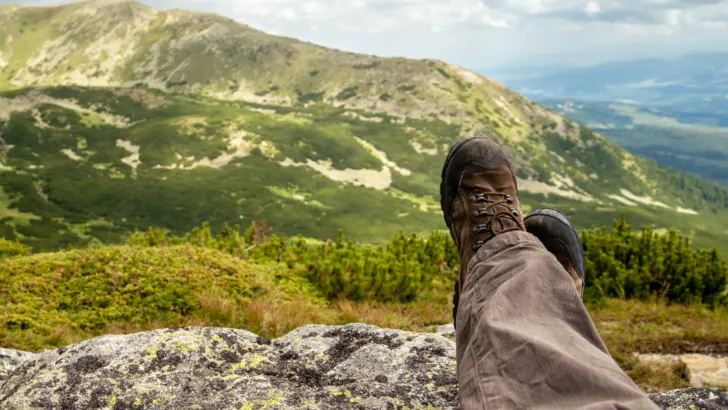
Weekend Hikes
Weekend hikes usually require a bit more preparation than day hikes. You’ll be carrying a heavier pack and walking for longer periods of time, so you’ll want to make sure your boots are broken in properly. I recommend breaking in your boots for at least 50-60 miles before embarking on a weekend hike. This will give your boots enough time to mold to your feet and provide the support you need on the trail.
Multi-Day Hikes
Multi-day hikes require the most preparation when it comes to breaking in your boots. You’ll be carrying a heavy pack and walking for several days in a row, so it’s crucial that your boots are comfortable and supportive. I recommend breaking in your boots for at least 80-100 miles before embarking on a multi-day hike. This will give you enough time to ensure that your boots are properly broken in and won’t cause any discomfort or blisters on the trail.
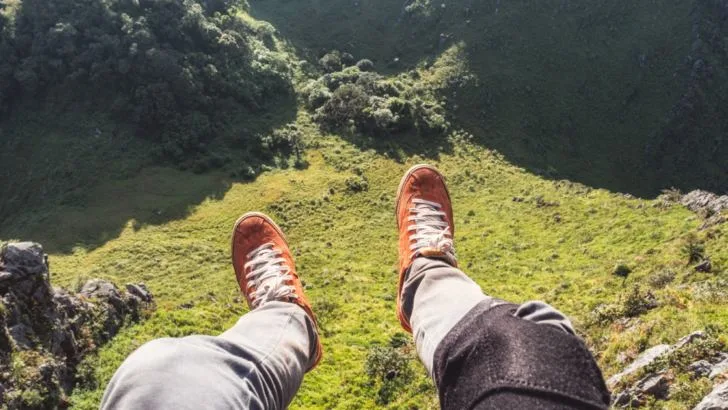
In summary, the number of miles required to break in your boots can vary depending on the type of hike you plan to embark on. It’s important to take the time to properly break in your boots to ensure that they are comfortable and supportive on the trail. By following these guidelines, you’ll be able to determine how many miles you need to walk to break in your boots for different types of hikes.
Comparison of Break-in Methods
When it comes to breaking in hiking boots, there are several methods to choose from. In my experience, the most effective method is the one that works best for you and your boots. Here’s a comparison of some common break-in methods:
Method 1: Walking around the house
Walking around the house in your new hiking boots is a great way to start breaking them in. This method allows you to wear your boots for extended periods without putting too much stress on your feet. Make sure to wear the socks and insoles you’ll be using on the trail and tie your boots snugly, but not too tight. This method is best for those who have a lot of time to break in their boots.
Method 2: Short hikes
Short hikes are a great way to break in your hiking boots while also getting some exercise. Start with easy trails and gradually increase the distance and difficulty over time. This method allows you to break in your boots while also getting used to the weight of your pack. Make sure to wear the socks and insoles you’ll be using on the trail and bring along any other gear you’ll be using on your hike.
Method 3: Wearing them to work
If you have a job that requires you to be on your feet all day, wearing your new hiking boots to work can be a great way to break them in. This method allows you to wear your boots for extended periods while also getting paid. Make sure to wear the socks and insoles you’ll be using on the trail and bring along any other gear you’ll be using on your hike.
Method 4: Using a boot stretcher
If you’re short on time or have particularly stubborn boots, using a boot stretcher can be a great way to speed up the break-in process. Boot stretchers work by stretching the leather in your boots, making them more comfortable to wear. This method is best for those who have already tried other methods and are still experiencing discomfort.
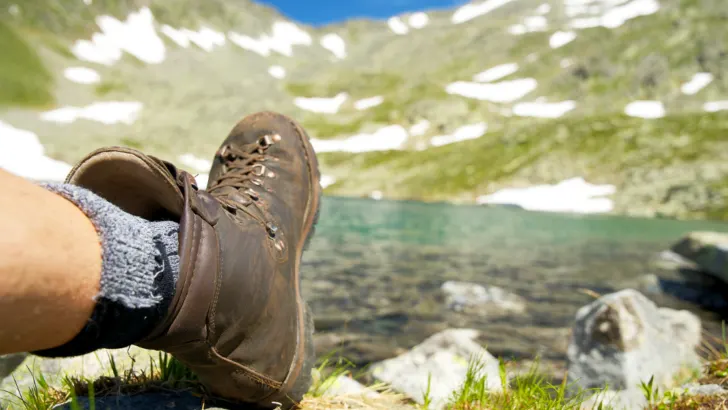
In conclusion, there are many ways to break in hiking boots, and the best method for you will depend on your boots and your preferences. Whether you prefer walking around the house, going on short hikes, wearing your boots to work, or using a boot stretcher, the key is to be patient and take your time. With a little bit of effort, you can have comfortable, broken-in hiking boots in no time.
Case Study of Successful Break-in
When I bought my new hiking boots, I was nervous about the break-in period. I had heard horror stories of blisters and discomfort, and I didn’t want that to happen to me. But with some careful planning and patience, I was able to successfully break into my boots without any issues.
First, I made sure to choose the right size and style of boots for my feet and hiking needs. I went to a reputable outdoor store and tried on several pairs, walking around the store for at least 10 minutes in each pair. I also made sure to wear the same type of socks that I would wear on the trail.
Once I had my boots, I started the break-in process by wearing them around the house for short periods of time. I would wear them while doing chores or going for a short walk around the neighborhood. This helped me get used to the feel of the boots without putting too much stress on my feet.
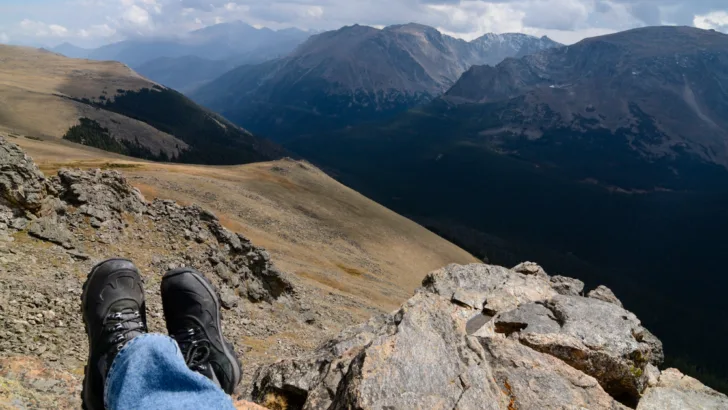
Next, I started taking short hikes in my boots. I would gradually increase the distance and weight in my backpack, making sure to listen to my body and stop if I felt any discomfort. I also made sure to wear my boots on different types of terrain, including rocky and uneven trails.
Throughout the break-in process, I made sure to take care of my feet and boots. I would regularly clean and condition my boots, and I would wear moisture-wicking socks to prevent blisters. I also made sure to rest and stretch my feet after each hike.
In total, it took me about 50 miles of hiking to fully break into my boots. But the time and effort were worth it, as I now have a comfortable and reliable pair of hiking boots that I can wear on any trail.
Resources for Hikers
As a seasoned hiker, I know how important it is to have the right gear, including well-fitting boots. Breaking in hiking boots is a crucial step to ensure comfort and avoid blisters on long hikes. Here are some resources that I find helpful when breaking in my hiking boots:
- Manufacturer’s instructions: Always read and follow the manufacturer’s instructions when breaking in your boots. They may provide specific tips on how to break in your particular pair of boots.
- Online forums: Online forums such as Reddit’s r/hiking or r/CampingandHiking can be a great resource for hikers. You can ask for advice on breaking in your boots or search for existing threads on the topic.
- Hiking blogs: There are many hiking blogs out there that provide tips and advice on hiking gear, including breaking into hiking boots. Some of my favorite blogs include SectionHiker, The Trek, and OutdoorGearLab.
- REI’s Expert Advice: REI is a well-known outdoor retailer that offers expert advice on all things hiking. Their website has a section dedicated to breaking in hiking boots, which includes tips on how to gradually increase weight and mileage during the break-in process.
- Hiking clubs and groups: Joining a hiking club or group can be a great way to connect with other hikers and learn from their experiences. They may have specific advice on breaking in hiking boots based on the terrain and climate in your area.
- The North Face – Hiking Boot Guide: The official website of The North Face provides a comprehensive guide on hiking boots, including tips on breaking them in and selecting the right pair. [Link: https://www.thenorthface.com/about-us/technology/hiking-boot-guide.html]
- REI – How to Break in Hiking Boots: REI is a renowned outdoor retailer that offers expert advice on various hiking topics. Their article provides detailed instructions on breaking in hiking boots effectively. [Link: https://www.rei.com/learn/expert-advice/breaking-in-hiking-boots.html]
Remember, breaking in hiking boots is a gradual process that can take anywhere from a few days to a few weeks. It’s important to listen to your feet and adjust your break-in process as needed. With the right resources and a little patience, you’ll be hitting the trails in comfortable boots in no time.
Conclusion
Based on my research and personal experience, the number of miles it takes to break in hiking boots varies depending on the type of boots and the individual’s feet.
Low-cut, trail runner, or lightweight hiking boots usually require fewer miles to break in properly. On the other hand, heavy-duty leather mountaineering boots may take more miles to mold to the shape of your foot.
It’s important to take the time to properly break in your hiking boots to avoid blisters and discomfort on the trail. However, it’s also important to listen to your body and adjust your hiking plans accordingly. If your boots are causing significant pain or discomfort, it may be time to consider a different pair or seek professional advice.

In addition to breaking in your boots, proper maintenance can also extend the lifespan of your hiking boots. Regular cleaning, conditioning, and replacing worn-out parts can help keep your boots in good condition for years to come.
Overall, breaking in hiking boots is a process that requires patience and attention to detail. By taking the time to properly break in your boots and maintain them, you can enjoy comfortable and safe hiking experiences for years to come.
Once you know how many miles it takes to break in your hiking boots, you can start to think about how much they will stretch. Our article ‘Do Hiking Boots Stretch‘ provides more information on this topic.
How long does it take to break in a pair of hiking boots?
Breaking in a new pair of hiking boots typically takes between 2 to 4 weeks. However, this can vary depending on the type of boot, how often you wear them, and the activities you use them for. Some people find that it takes longer to break in their boots, while others may find that they are comfortable after just a few days of wear.
How many miles does it take to break in a pair of boots?
There is no set number of miles that it takes to break in a pair of hiking boots. Instead, it is important to focus on wearing your boots regularly and gradually increasing the distance of your hikes. It is recommended that you start with shorter hikes of 1-2 miles and gradually work your way up to longer hikes of 5-10 miles.
How important is it to break in hiking boots?
Breaking in hiking boots is essential to ensure that they are comfortable and provide the necessary support for your feet and ankles. Wearing boots that have not been properly broken in can lead to blisters, hot spots, and other foot injuries.
How do you break in hiking boots in one day?
Breaking into hiking boots in one day is not recommended, as it can lead to discomfort and foot injuries. However, if you need to wear your boots for an extended period of time, you can try wearing them around the house and doing some light walking to help soften the leather and mold the boots to your feet.
What are some tips for breaking in hiking boots quickly?
To break in hiking boots quickly, it is important to wear them regularly and gradually increase the distance of your hikes. You can also try wearing your boots around the house and doing some light walking to help soften the leather. Additionally, wearing thick hiking socks and using insoles can help to cushion your feet and prevent blisters.
Which hiking boots require little to no breaking in?
Hiking boots made from synthetic materials, such as Gore-Tex or nylon, typically require less breaking in than boots made from leather. Additionally, some hiking boots are designed with a more flexible sole and require less time to break in. It is important to do your research and choose a pair of boots that are comfortable and appropriate for your hiking needs.
